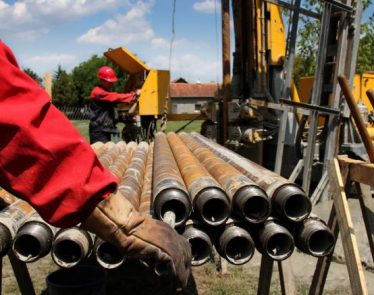
After a decade of development, the fifth generation of wireless communication (5G) is finally becoming a reality in our daily lives. Promising download speeds in excess of 20 times the current capability, this new wave of wireless technology will open the door for a world of new possibilities across the spectrum of business, healthcare, manufacturing, transport, tourism, and many more. As technology becomes smarter, we are about to enter a new era of efficiency.
The 5G Energy Problem
However, powering such a network will not be easy. Energy groups are warning regulators that a 5G rollout without securing adequate bandwidth for the sector could cause major harm to the electric grid and critical infrastructure. In fact, Swedish academic Dr. Anders Andrae, who is also employed by Huawei, has conducted some interesting research into the area of energy consumption in the IT sector, and his findings are quite astounding.
According to Dr. Andrae, fixed access networks consumed about 167 TWh (trillion watts per hour) of electricity in 2015, while wireless networks consumed roughly 50 TWh. To put that in perspective, the average US household consumes about 7,200 kWh of electricity per year. So a common concern now is that if 5G can offer speeds twenty times faster, energy consumption should rise in a similar fashion.
Chris Bronk, assistant professor of computer and information systems and associate director of the Center for Information Security Research and Education at the University of Houston, has also been conducting some research into this area. He argues that if carriers can’t afford the energy costs to implement 5G, the technology simply won’t be deployed. He said, “That there could be innovation in how energy is harnessed and transmitted is a potentially important area for innovation. Our assumptions can and will change.”
But, what if this innovation has already been found? What if 5G could be used to make its own energy sources more efficient? Well, one company is way ahead of the curve on that idea and has made it its mission to bring about this change.
mCloud Technologies Corp (TSXV:MCLD) (OTCQB:MCLDF)
mCloud Technologies is a Vancouver-based provider of asset management solutions combining IoT, cloud computing, artificial intelligence, and analytics, which is aiming to create a more efficient future by combining the latest technologies in order to reduce energy waste while maximizing energy production, essentially aiming to get the most out of the current infrastructure.
>> Penny Stocks to Watch: Intelsat SA and Hecla Mining
The company’s flagship AssetCare technology is already taking off worldwide, with over 40,000 connected assets around the globe, including buildings, wind farms, oil rigs, and gas lines. Despite the complexity of the technology, AssetCare’s overall function is relatively simple. IoT sensors send data from connected assets into the cloud, where AI technology and analytics are applied to maximize their performance.
Rapid Uptake of mCloud’s Technology
Uptake for AssetCare has been rapid and mCloud has been busy expanding into a host of areas. In July, the company announced that it had acquired Fulcrum Automation Technologies and Autopro Automation Consultants, signaling its entrance into process industries, including oil and gas, petrochemical, and pipeline management. As of July, mCloud Technologies has delivered AssetCare to six oil and gas facilities in Canada’s energy epicenter of Alberta.
It’s not just oil and gas that mCloud has applied its technology to. Back in August, the company entered into an agreement with Longyuan Construction Investment Wind Power Co in China to connect 35 GE wind turbines at its Pu Fa Wind Farm. mCloud combines drone and AI technology to help wind farm operators quickly collect and classify data about the condition of their wind turbine blades. This technology is also being implemented in the UK by way of a deal with Britwind, with further expansions into the continental European market planned.
Even more recently, mCloud announced that it had acquired Atlanta-based 3D technology firm Construction Systems Associates Inc (CSA) in January. CSA is one of the largest providers of 3D asset management capabilities in the nuclear power industry in North America, with over 80% of all nuclear plants in the US relying on CSA’s technology to facilitate plant efficiencies.
The Takeaway
Regardless of the impact of 5G technology on energy grids, energy consumption is one of the most pressing issues facing the world today. Climate change is accelerating at an unprecedented rate and becoming an increasingly more prominent political issue. Where 5G serves to vastly improve efficiency in our daily lives, it is clearly not without its drawbacks, as evidenced by the academic research referenced above.
mCloud Technologies’ impressive portfolio of assets and the broad applications for its technology clearly show that it is ahead of the game on this one, and investors have caught onto this. In the last year, mCloud stock has rocketed over 85%, and the 5G revolution hasn’t even begun yet. While nothing is certain, this certainly looks like a firm with a clear vision for its role in the new 5G connected world, and one that could be vital to the very sustainability of that world.
Featured Image: DepositPhotos © nicholashan











